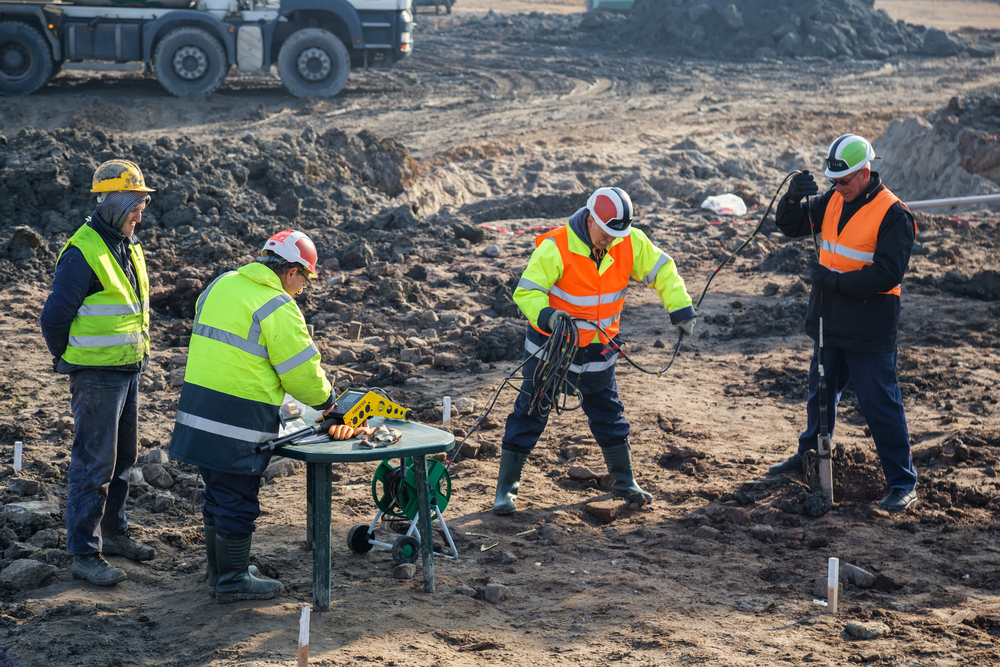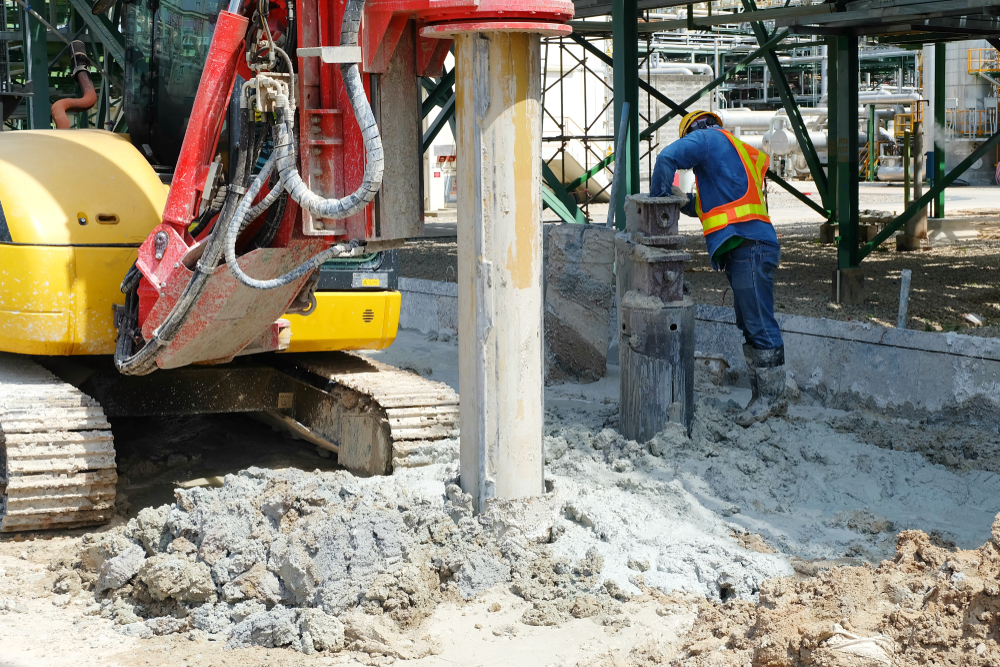Just How a Knowledgeable Tailings Engineer Can Optimize Your Mining Operations
Just How a Knowledgeable Tailings Engineer Can Optimize Your Mining Operations
Blog Article
Discovering the Innovative Strategies and Technologies Forming the Future of the Geotechnical Market for Lasting Engineering Solutions
The geotechnical industry is undertaking a transformative shift, driven by cutting-edge techniques and modern technologies that highlight lasting design services. Advanced dirt stabilization techniques, the use of wise materials, and the application of data analytics are redefining how we approach framework obstacles. As these developments advertise ecological stewardship, they also increase critical concerns concerning their sensible execution and long-term efficiency. Comprehending the interplay in between these developments and their potential to reinvent the field welcomes additional expedition right into the future of sustainable design practices.
Advanced Soil Stablizing Strategies
Dirt stablizing is a vital procedure in geotechnical design, targeted at improving the physical properties of dirt to boost its load-bearing ability and resilience. Advanced soil stablizing strategies play a crucial role in dealing with challenges related to weak or unsteady soils, thereby making it possible for risk-free and effective building techniques.
Among the noticeable methods, chemical stablizing includes the use of ingredients such as lime, cement, or fly ash, which react with dirt bits to create a more natural mass. This method is particularly effective in boosting the stamina and moisture resistance of extensive clay soils. Mechanical stablizing, on the other hand, includes the physical change of soil properties via compaction or the incorporation of granular products, resulting in boosted thickness and security.
One more ingenious approach is using geosynthetics, which offer reinforcement and minimize soil erosion while boosting drainage. Techniques like soil mixing and deep dirt stabilization are additionally getting grip, permitting in-situ treatment of troublesome soils. Collectively, these advanced techniques not only improve the efficiency of dirt frameworks yet additionally add to sustainable engineering practices by reducing the need for comprehensive excavation and material transport.
Smart Products in Geotechnics
Innovation goes to the center of geotechnical design, especially with the consolidation of wise products that enhance the performance and functionality of soil frameworks. Smart materials, such as shape memory alloys, piezoelectric products, and self-healing polymers, are revolutionizing the way engineers approach soil stabilization and facilities durability (tailings engineer). These products can adapt to changing environmental problems, react to stress and anxiety, and also repair themselves, dramatically improving the resilience of geotechnical systems
For example, piezoelectric products can generate electric fees in response to mechanical tension, offering potential for real-time monitoring of soil problems and architectural integrity. Self-healing materials can autonomously fix problems and fractures, minimizing maintenance prices and expanding the life expectancy of geotechnical properties. The combination of these smart materials not only improves the mechanical buildings of dirt but likewise adds to lasting engineering methods by decreasing source usage and ecological effect.
As the geotechnical market remains to advance, the fostering of smart materials will play a critical role in establishing ingenious remedies, guaranteeing that frameworks are not just durable but likewise versatile to future obstacles. This transformative approach is poised to redefine the criteria of safety and performance in geotechnical design.
Data Analytics for Facilities
The assimilation of smart products in geotechnical engineering has paved the means for sophisticated methods, especially in the realm of data analytics for facilities. This innovative approach leverages considerable data collection and analytical strategies to boost decision-making procedures throughout the infrastructure lifecycle. By making use of sensors embedded in wise products, designers can continually keep track of critical specifications such as soil stability, moisture levels, and structural integrity.
Data analytics allows the makeover of raw information into workable insights, enabling for predictive upkeep and enhanced threat management. Advanced algorithms and device knowing methods promote the recognition of patterns and anomalies, which can inform prompt treatments and enhance resource allowance. Additionally, integrating geographic details systems (GIS) improves spatial evaluation, more enriching the decision-making framework.
By utilizing the power of data analytics, the geotechnical sector is positioned to not just improve existing techniques however additionally pioneer cutting-edge services for future framework difficulties. This synergy of modern technology and important source engineering principles will certainly specify the future of lasting framework growth.

Sustainable Ground Renovation Approaches
Various lasting ground renovation approaches are becoming vital options to attend to the challenges of geotechnical design while reducing environmental impact. These approaches not just boost dirt efficiency however also advertise eco-friendly stewardship by minimizing reliance on traditional, much more intrusive strategies.

One more innovative approach is the application of geosynthetics, which includes naturally degradable materials that strengthen dirt while advertising water drainage and disintegration control - consulting engineer. This reduces the need for heavy this content equipment and lessens site disruption, thus protecting neighborhood ecological communities
On top of that, techniques such as vibrant compaction and vibro-replacement have evolved to include lasting practices, decreasing and incorporating recycled materials carbon impacts. These methods exhibit the sector's change towards even more environmentally responsible options, making certain that ground improvement not only satisfies design demands however additionally contributes positively to the surrounding atmosphere.
Innovations in Ecological Monitoring
In current years, innovations in environmental monitoring have dramatically boosted the capability to examine and take care of geotechnical tasks with minimal environmental disruption. Innovative innovations, such as remote sensing, Web of Things (IoT) gadgets, and real-time information analytics, are changing just how ecological impacts are determined and alleviated.
Remote sensing technologies, consisting of satellite imagery and airborne LiDAR, promote the fast assessment of land use changes and environmental conditions - tailings engineer. These tools permit continual link tracking of sites, enabling engineers to recognize prospective issues before they rise. Additionally, IoT gadgets, furnished with sensing units for parameters like dirt moisture, gas, and temperature exhausts, offer real-time data streams that enhance the understanding of site-specific environmental variables
Real-time information analytics even more fine-tune decision-making processes by integrating information from numerous sources, permitting positive management approaches. This alternative strategy not just guarantees compliance with environmental regulations but also promotes lasting methods within the geotechnical sector.
As these technologies proceed to evolve, they hold the potential to bridge the void in between design goals and ecological stewardship, cultivating an extra sustainable future for geotechnical projects worldwide.
Conclusion
In final thought, the geotechnical sector is undertaking a transformative advancement driven by ingenious techniques and technologies that focus on sustainability. Advanced dirt stablizing techniques, the integration of smart materials, and the application of data analytics collectively enhance the strength and performance of infrastructure. Additionally, sustainable ground enhancement methods and innovations in ecological monitoring emphasize the market's commitment to ecological stewardship. These advancements not just address modern engineering obstacles however additionally lead the way for a much more sustainable future in geotechnical techniques.
Techniques like dirt blending and deep soil stabilization are additionally gaining traction, permitting for in-situ therapy of bothersome soils. Jointly, these innovative methods not only improve the efficiency of dirt frameworks yet additionally contribute to sustainable design techniques by lessening the need for substantial excavation and material transport.

Report this page